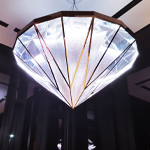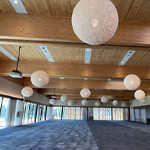Why it’s important to understand the difference between ‘source lumens’ and ‘delivered lumens’
Lumens are a measure of the total visible light output from a light source, no matter if it is LED, Fluorescent, Halogen, or Incandescent. However, when speaking about the number of lumens on a fixture spec sheet, it does not always mean that is the number of lumens coming out of the luminaire.
Knowing how much light your space needs to be illuminated appropriately depends on many factors. One of them is to understand the difference between “source lumens” and “delivered lumens”, as this ultimately affects how many lumens are needed to light up your space as planned.
Lumens are a measure of the total visible light output from a light source, no matter if it is LED, Fluorescent, Halogen, or Incandescent. However, when speaking about the number of lumens on a fixture spec sheet, it does not always mean that is the number of lumens coming out of the luminaire. For example, a decorative LED pendant may produce 850 lumens from the source but once the light travels through the diffuser and shade, only 450 lumens may leave the fixture. This could leave a space without sufficient light levels.
Therefore, we need to understand the difference between “source lumens” and “delivered lumens” and how this affects the final impact of lighting for a space.
SOURCE LUMENS
The lumen value that is emitted from a light source is generally referred to as “source lumens”. It is the total amount of lumen output emitted by the element that is producing the light. Once the light is transmitted through any lens or diffuser, or bounced off of any reflector or shade the number of lumens decreases.
DELIVERED LUMENS
After the light has gone through various reflections, refractions, or absorptions and exited the light fixture, the resulting number of lumens is called “delivered lumens”. The amount of delivered lumens can be significantly less than the amount of source lumens depending on the number of reflections, refractions, or absorptions of various materials the light goes through. The mechanical build of a luminaire can also contribute to how much light is being blocked or dispersed, ultimately interrupting and affecting the light flow.
Because of this loss in light output, lighting designers and engineers need to be aware of the difference between the light that emits from the light source and the ultimate output that arrives on the scene, as this will help determine how many fixtures are needed to light up a space appropriately.
CONCLUSION
When creating a lighting design for a space, lighting designers need to evaluate light fixtures to ensure the lumen output meets their needs. Recognizing and understanding the differences between source lumens and delivered lumens is imperative because different manufacturers list different values on their specification sheets. Without this knowledge and information, the space in question could be equipped with fixtures that would provide insufficient lighting.
Ideoli works with a number of world-class lighting designers and engineers worldwide who are experts at analyzing how many ‘source lumens’ and how many ‘delivered lumens’ are needed to light up any space. We would love to collaborate with you on your lighting project and help make your space glow. Get in touch with us today at invigorate@ideoli.com.
















